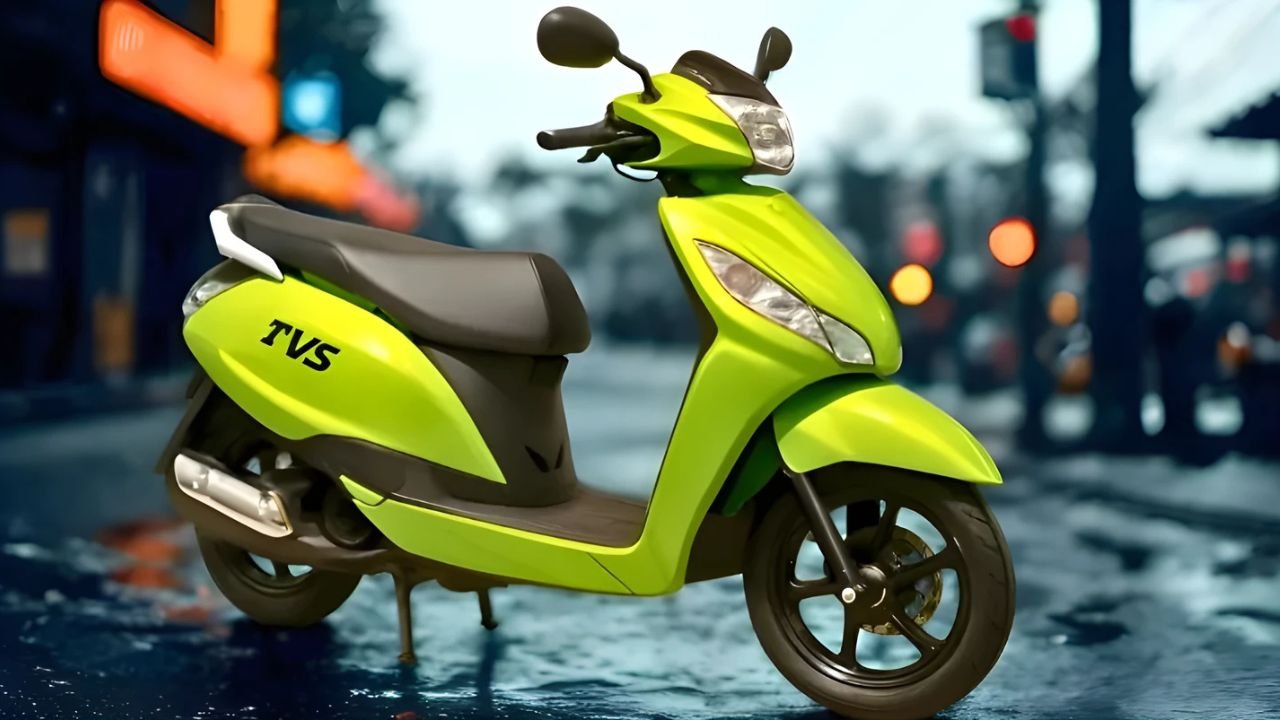New TVS Jupiter CNG Launched: A Greener, Smarter Way to Commute- For years, the TVS Jupiter has been one of India’s most trusted scooters. Ask any family rider or college student, and chances are they’ve either owned one or know someone who swears by it. Known for its practicality, comfort, and fuel efficiency, the Jupiter has carved a permanent place in the Indian two-wheeler market. But in 2025, TVS has taken a bold new step by launching the TVS Jupiter CNG—a scooter that runs on compressed natural gas.
90 km/h top speed: New TVS iQube Hybrid launched with 110cc petrol engine
Honestly, this move feels like a game-changer. Petrol prices are unpredictable, environmental concerns are rising, and people are looking for affordable alternatives. And now, with the Jupiter CNG, TVS seems ready to meet those needs head-on.
Why CNG, and Why Now?
You might be wondering—why CNG for a scooter? Well, the answer is simple: running costs and sustainability.
CNG has already proven itself in the car segment, especially in metros like Delhi, Mumbai, and Pune, where CNG cabs and cars are a common sight. The fuel is cheaper than petrol, cleaner to burn, and more eco-friendly. Bringing it to scooters means riders can now enjoy lower expenses per kilometer without giving up the convenience of a two-wheeler.
To be fair, it’s not for everyone just yet, because CNG refueling infrastructure is still limited to cities. But for urban riders, this is nothing short of revolutionary.
Design: Familiar with a Fresh Touch
At first glance, the new Jupiter CNG doesn’t scream “different.” And that’s a good thing. It retains the classic, practical Jupiter design that appeals to riders across age groups. The wide seat, upright posture, flat footboard, and overall balanced styling are still there.
But TVS has made sure to highlight the new identity. You’ll spot CNG badging on the side panels, a refreshed front apron with LED DRLs, and new color options that make the scooter look more premium. Subtle changes, yes, but effective in making it feel modern and distinct from its petrol sibling.
Engine and Hybrid Fuel Setup
Here’s where the Jupiter CNG really shines. Under the seat sits a compact dual-fuel system—a traditional petrol tank and a neatly integrated CNG cylinder. Riders can switch between petrol and CNG at the push of a button, just like in CNG cars.
On petrol mode, the 125cc engine delivers its usual smooth and peppy performance. Switch to CNG, and while the power output drops slightly, it’s still more than adequate for city commutes and daily rides. The real reward is mileage. On CNG, the Jupiter can return an incredible 70–75 km/kg, making it far cheaper to run than a petrol-only scooter.
Honestly, if you’re tired of fluctuating petrol bills, this hybrid approach feels like a breath of fresh air.
Practicality and Everyday Usability
One of the biggest concerns with CNG scooters is space. Where does the cylinder go? Does it eat into storage? Well, TVS has been smart here. The CNG tank is compact and positioned under the seat in a way that still leaves decent boot space. Sure, you lose a bit compared to the petrol-only version, but you can still fit a half-face helmet or grocery bags without much trouble.
The scooter continues to offer a comfortable, upright riding position, easy handling in traffic, and smooth suspension for bad roads. And since it’s a Jupiter, you can expect reliability and durability built in.
On the flip side, refueling takes a little longer than topping up petrol, and you need to plan your trips around available CNG stations. But if you live in a metro with good infrastructure, this won’t be a dealbreaker.
Features and Tech
TVS hasn’t forgotten the modern rider. The Jupiter CNG comes with a fully digital instrument cluster that displays both petrol and CNG levels. It also offers Bluetooth connectivity, call and SMS alerts, turn-by-turn navigation, and a side-stand engine cut-off feature.
You also get conveniences like an external fuel filler (for petrol), USB charging port, and under-seat light. These little touches make everyday riding just that bit easier.
Safety and Ride Quality
Safety hasn’t been ignored either. The Jupiter CNG comes with front disc brakes in higher trims, CBS (combined braking system), and wider tyres for extra grip. The scooter’s frame has been strengthened to handle the dual-fuel system, ensuring balance and stability on the road.
Ride quality remains smooth thanks to telescopic front forks and a rear monoshock, making it city-friendly and family-friendly at the same time.
Pricing and Positioning
Now, the big question: how much does it cost? The TVS Jupiter CNG is expected to be priced between ₹90,000 and ₹1.05 lakh (ex-showroom), depending on the variant. That makes it slightly more expensive than the petrol version, but the long-term savings on fuel more than make up for it.
And here’s the kicker—it doesn’t really have direct competition right now. Popular scooters like the Honda Activa, Suzuki Access, and Yamaha Fascino still rely solely on petrol. Which means TVS has the first-mover advantage in the CNG scooter space.
Final Thoughts: A Clever Move for the Future
So, is the New TVS Jupiter CNG worth all the hype? Honestly, yes. It’s practical, economical, eco-friendly, and still carries everything people already love about the Jupiter. It’s not perfect—refueling availability is a challenge, and performance on CNG is slightly toned down—but for most urban riders, the benefits will easily outweigh the trade-offs.
To be fair, this isn’t just about saving money; it’s also about choosing a cleaner way to travel. And for a country like India, where scooters are the backbone of daily mobility, innovations like these matter a lot.
At the end of the day, the Jupiter CNG feels like a smart middle ground—bridging the gap between petrol convenience and greener alternatives. It’s TVS saying, “We get your needs, and here’s a scooter that ticks both the present and the future.”
And honestly, that’s something worth celebrating.
